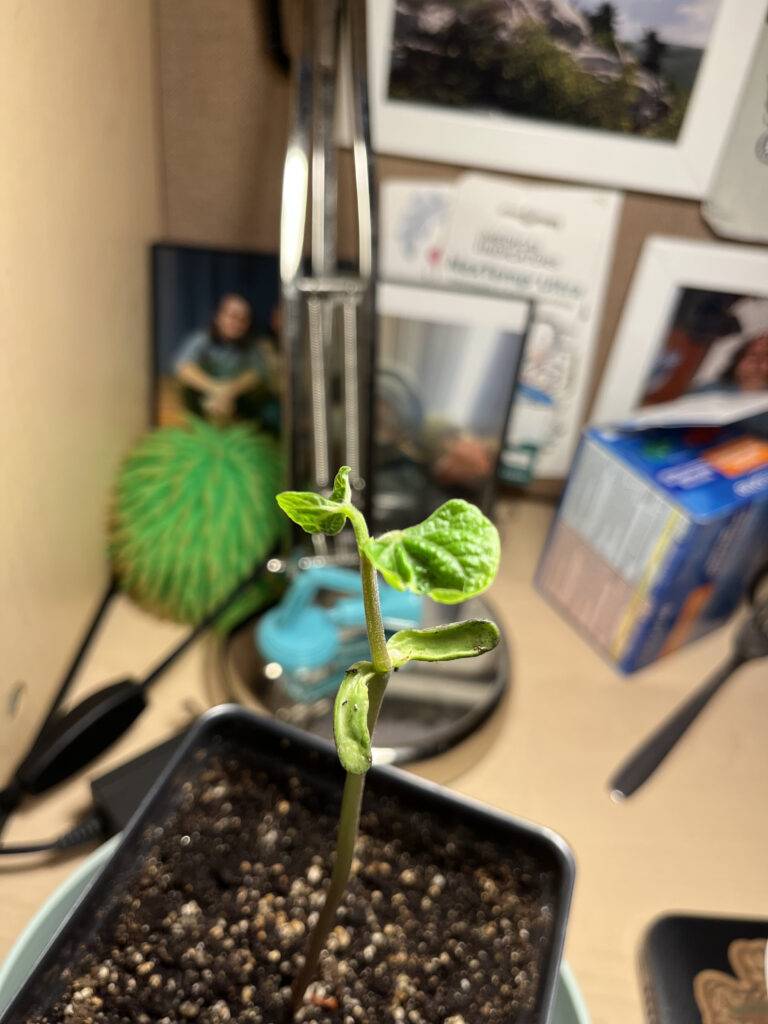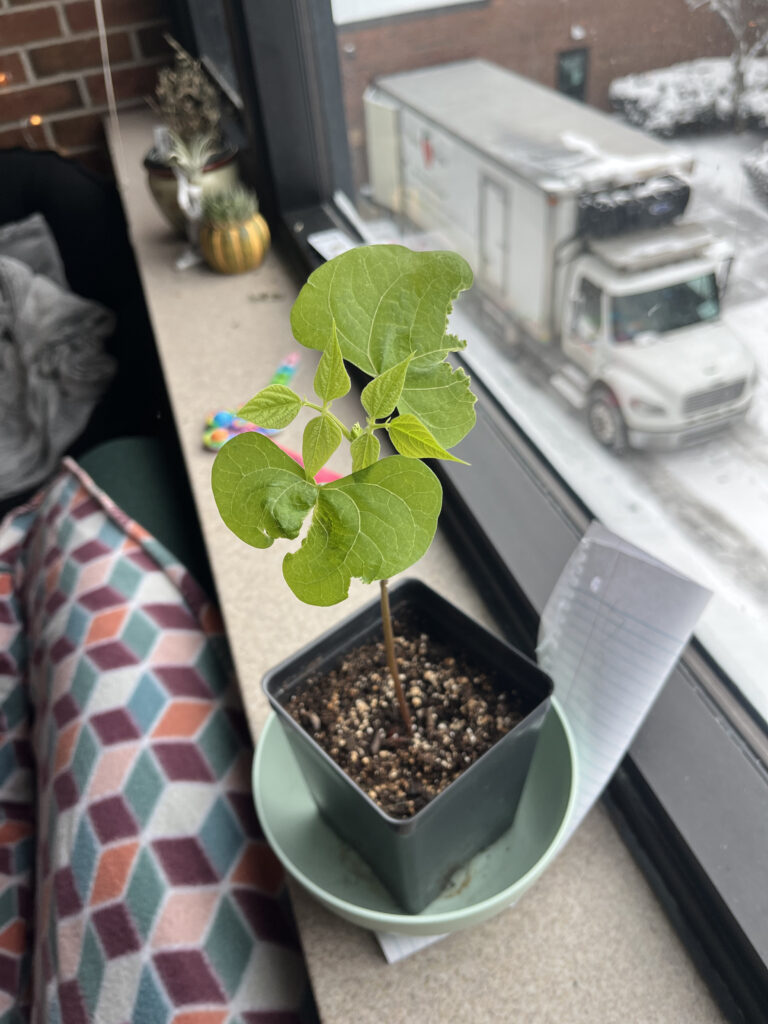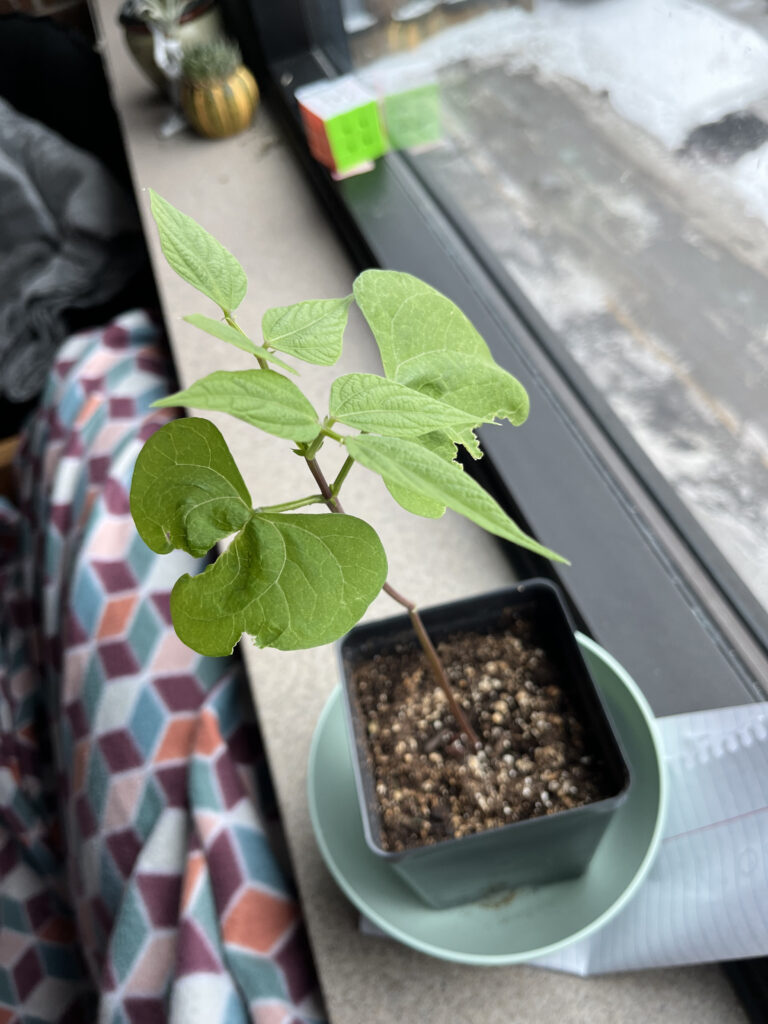I think this is where spring break happened, so we’re about to see some speedy growth (about two weeks worth).



Here I will talk about how plants grow: as a bean plant, my plant is part of the Fabaceae family. That means it’s a Eudicot!
A Eudicot is a type of angiosperm, or flowering plant, which evolved to have two cotyledons. They are different from monocots which only have one cotyledon.
Some other signs of a eudicot in my bean plant:
- Net-like veins in the leaves
- Taproot (believe me its there!)
- Ringed vascular system (on a microscopic level)
Some other cool things in botany is phyllotaxy: how leaves are arranged on the stem. I’ve inserted a handy chart from the internet to explain the differences

Looks like we’re dealing with an Opposite Decussate plant. Exciting!

Here is a diagram of the leaf itself! The green we see on top of leaves is the protective layer of cells known as the cuticle. The mesophyll cells take care of photosynthesis, and the stomata are responsible for movement of gases in and out of the plant.
Photosynthesis is the plants way of converting solar energy into useable energy in the form of sugar.
So we know the plant gets water and nutrients from its roots, and gases from it’s leaves. We also know it creates sugars. So how does this get transported across the plant?

Xylem and Phloem are vascular tissues: the ‘veins’ of the plant. Xylem transports water and nutrients UP from the roots in a one way system. The phloem transports sugars DOWN from the leaves in a TWO WAY system. They work together to supply each cell with what they need to survive.
Transpiration pulls water UP the plant: as one water molecule leaves the leaf through the stomata, in order to keep the same pressure rate, another water molecule must be brought into the plant. This creates a constant movement of water up.
Turgor pressure keeps cells looking normal. This is when the cell has just the right amount of water in it. Water will move to the area with the highest solute. Having too much solute outside the cell means all the water leaves it and it becomes hypertonic. Having too much solute in the cell means its becomes hypotonic. Neither is good long-term we want to be perfect equal, and isotonic! So don’t over or under water!